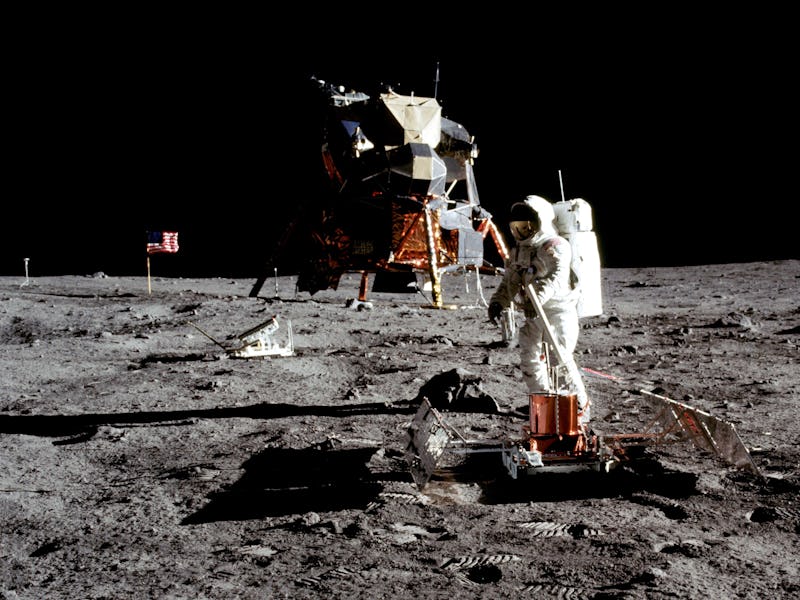Despite the fact that most of the the New York City subway system still doesn’t have reception — or working cars, for that matter — next year, the moon is going to get a 4G network.
The plan is the result of a partnership between Vodafone Germany, Nokia, Audi, and a Berlin-based space exploration company called PTScientist. Sometime in 2019, the companies will launch an “ultra compact network” with 4G capabilities on board a SpaceX Falcon 9 rocket, set to liftoff from Cape Canaveral. If successful, this would be the first-ever moon landing by a private entity. If it flops spectacularly, at least it will be a tremendous waste of time and money.
Hopefully, Audi lunar quattro rovers will descend on the surface of the moon to beam back live streaming video. This could provide some pretty sweet views of NASA’s Apollo 17 lunar roving vehicle, left behind on the moon back in 1972. After all these years, it could use some company.
“This project involves a radically innovative approach to the development of mobile network infrastructure,” Vodafone Germany CEO Dr. Hannes Ametsreiter says in a press release. “It is also a great example of an independent, multi-skilled team achieving an objective of immense significance through their courage, pioneering spirit and inventiveness.”
While the 4G network could very well lay the groundwork for future developments on the moon, it’d be nice if Vodafone and Nokia could extend some of that “pioneering spirit and inventiveness” to large swaths of the world that still don’t have cell reception.
“I barely get reception in my office, but yeah sure, the people on the moon really need that 4G,” Twitter user @kamcnally writes.
Others seem to agree.
At least future astronauts will soon be able to do all the mundane things we enjoy here on Earth, like texting and tweeting our terrible thoughts — all at 4G speeds.
